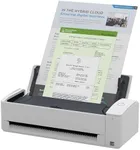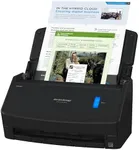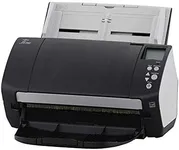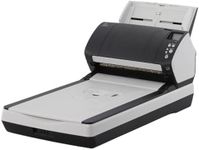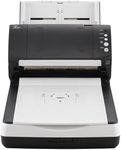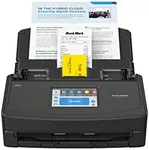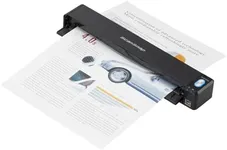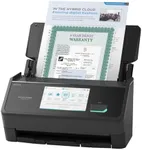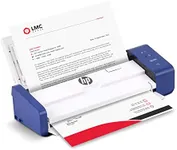Buying Guide for the Best Fujitsu Scansnap Scanners
When choosing a Fujitsu ScanSnap scanner, it's important to consider your specific needs and how you plan to use the scanner. Whether you're looking to digitize documents for personal use, small business, or a larger organization, understanding the key specifications will help you make an informed decision. Here are the key specs to consider and how to navigate them to find the best fit for you.Scan SpeedScan speed refers to how quickly the scanner can process documents, usually measured in pages per minute (ppm). This is important if you have a large volume of documents to scan regularly. For light personal use, a lower scan speed (around 10-20 ppm) may be sufficient. For small businesses or more frequent use, a medium scan speed (20-30 ppm) is ideal. For high-volume environments, look for a scan speed of 30 ppm or higher. Consider your typical scanning workload to determine the right speed for you.
ResolutionResolution is measured in dots per inch (dpi) and determines the clarity and detail of the scanned images. Higher resolution is important for scanning photos or documents with fine details. For general document scanning, 300 dpi is usually adequate. If you need to scan high-quality images or detailed graphics, look for a scanner with 600 dpi or higher. Think about the type of documents you will be scanning most often to choose the appropriate resolution.
ADF CapacityADF stands for Automatic Document Feeder, which allows the scanner to process multiple pages automatically. A higher ADF capacity means you can load more pages at once, which is useful for batch scanning. For occasional use, an ADF capacity of 20-30 sheets may be enough. For more frequent or larger scanning tasks, look for an ADF capacity of 50 sheets or more. Consider how many pages you typically scan in one session to determine the right ADF capacity for you.
ConnectivityConnectivity options determine how the scanner connects to your computer or network. Common options include USB, Wi-Fi, and Ethernet. USB is straightforward and reliable for direct connections. Wi-Fi allows for wireless scanning, which is convenient if you need to place the scanner away from your computer or share it among multiple users. Ethernet is useful for integrating the scanner into a larger network. Think about your workspace setup and how you prefer to connect your devices to choose the best connectivity option.
Software FeaturesSoftware features can enhance the functionality of your scanner. Look for features like OCR (Optical Character Recognition) for converting scanned documents into editable text, automatic image correction, and cloud integration for easy storage and sharing. These features can save time and improve productivity. Consider what additional functionalities you need based on how you plan to use the scanner and choose a model that offers the right software features.
Size and PortabilityThe size and portability of the scanner are important if you have limited desk space or need to move the scanner frequently. Compact and portable models are ideal for small workspaces or for taking on the go. Larger models may offer more features and higher capacity but require more space. Think about where you will use the scanner and how often you need to move it to choose the right size and portability for your needs.
